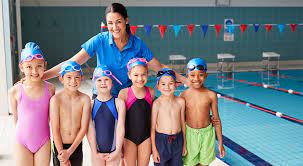Australia is home to more than 10,000 beaches, thousands of rivers, and an outdoor lifestyle that revolves around water. But every year, we lose lives to preventable drowning incidents — many of them involving children and inexperienced swimmers. That’s where water safety education plays a vital role.
If you’ve heard the term “Level 3 water” and aren’t sure what it means, or you’re wondering how a water safety course can help keep your family safe, this guide breaks it down simply. Whether you’re raising kids, working in aquatics, or just want to enjoy the water more confidently, these programs are for you.
What Is Level 3 Water?
Level 3 water refers to aquatic environments where deeper water, current, or limited supervision increases the risk. These include:
- Public beaches with unpredictable tides
- Deep pools or rivers
- Aquatic centres without lifeguards
These settings often require more advanced swimming skills and awareness than shallow or supervised spaces. That’s why enrolling in a water safety course that includes training for Level 3 conditions is so important. It ensures participants don’t just know how to float — they learn how to respond to risk.
Why Water Safety Education Matters
A report by the Royal Life Saving Society shows drowning remains a top cause of accidental death for Australian children under five. Adults aren’t immune either, with many incidents occurring during recreational activities like boating, fishing, or even taking a quick swim after a BBQ.
Water safety courses reduce these risks by teaching practical, real-life skills:
- Recognising dangerous currents
- Using flotation devices properly
- Performing basic rescues
- Knowing how to call for help
It’s not just about ticking a box. These courses build muscle memory and clear thinking during high-pressure moments.
What You’ll Learn in a Water Safety Course
Whether you’re taking a beginner class or an advanced program for surf or open-water swimming, the core elements focus on:
1. Personal Safety Skills
Participants learn how to stay calm, conserve energy, and get to safety if they fall in unexpectedly.
2. Risk Awareness
You’ll be trained to assess a body of water for hazards, read signs, and understand weather-related risks — a must for families going camping or fishing.
3. Rescue Techniques
Courses include simple techniques like reach rescues or throw rescues using everyday objects, plus how to respond without putting yourself in danger.
4. CPR and Emergency Response
In more advanced programs, you may also learn the basics of resuscitation and how to react if someone collapses in or near water.
Even better, many water safety course programs cater to kids, teens, adults, and professionals — meaning you can learn together as a family or pursue a career in aquatics.
Who Needs a Water Safety Course?
Let’s make this simple — almost everyone can benefit:
- Parents: To protect your kids at the pool or beach
- School staff: To supervise excursions or camps safely
- Hospitality workers: For jobs around hotel pools or resorts
- Lifeguard hopefuls: As a stepping stone to certifications
- Older adults: To reduce risk of falls or panic in the water
Even if you’re a strong swimmer, knowing how to prevent accidents and respond when they happen is a skillset worth having.
Real-Life Example: How a Teen’s Training Saved a Life
In 2023, a 15-year-old in Queensland pulled a younger child from a community pool after noticing they were submerged too long. The teen had completed a school-led water safety course just three months earlier.
They recognised the signs of distress, acted quickly using reach techniques, and yelled for help — avoiding a tragedy. The difference? Education and practice.
What Makes a Quality Course?
Not all water safety programs are equal. Look for courses that:
- Are nationally recognised and updated regularly
- Offer age-appropriate modules
- Include both theory and hands-on practice
- Are taught by certified instructors
- Offer progression through different levels, from beginner to advanced
The best courses are engaging, confidence-building, and designed to give people the tools they need in real emergencies — especially in Level 3 conditions.
Final Thoughts: Water Confidence Begins with Education
Every beach day, every pool party, every river trip — they should be about enjoyment, not anxiety. But confidence in the water doesn’t come from luck. It comes from knowing what to do, and how to help others when it matters most.
Taking a water safety course is one of the smartest moves you can make — whether you’re four, forty, or eighty. The water isn’t going anywhere. Let’s learn how to enjoy it, safely.

